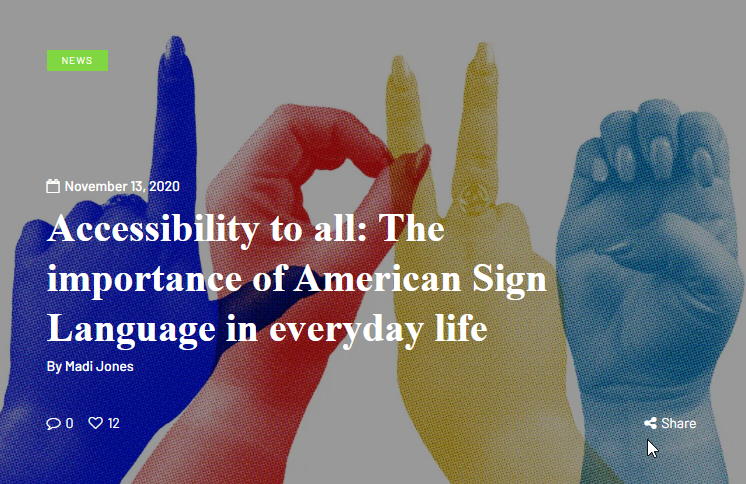
Over 5% of the world’s population is Deaf or hard of hearing, according to the World Health Organization. Many people believe those who are deaf and hard of hearing deserve equal access to communication, a higher quality of life and that ASL should be accessible to everyone in everyday life.
Part of this inclusivity is the capitalization of the word ‘Deaf’ when referring to the Deaf and hard of hearing community. This small detail helps to familiarize others with Deaf culture and normalize how people refer to the Deaf and hard of hearing community, according to the Deaf Counseling Center.
Claire Oberg, senior elementary education and special education major, has always been interested in Deaf culture and American Sign Language (ASL), which is why she decided to minor in ASL during her sophomore year. Oberg is currently student teaching and sometimes uses sign language to communicate with her students.
“I use [ASL] when I’m teaching, specifically in special education with non-verbal students and students with different disabilities. It’s helpful to have a signed language that I can teach them or provide communication,” Oberg said.
ASL has given Oberg a greater appreciation for Deaf culture and given her more opportunities to communicate with others.
“[ASL] is very enjoyable to learn on a personal level. You also get opened up to this whole other community and different ways of communicating,” Oberg said. “I feel like you become a more effective communicator because of those non-verbal cues of facial features and how to be aware of what people want out of a conversation.”
While Deaf culture supports individuals who are deaf, it also gives access to information about the world such as the ability to drive, travel, work and play an active role in society, according to the National Deaf Education Center.
In a world that relies mostly on spoken languages, Deaf culture and ASL can open doors for everyone. With changes to everyday life, such as masks and Zoom, it can be difficult for the Deaf community to interact with people how they usually would.